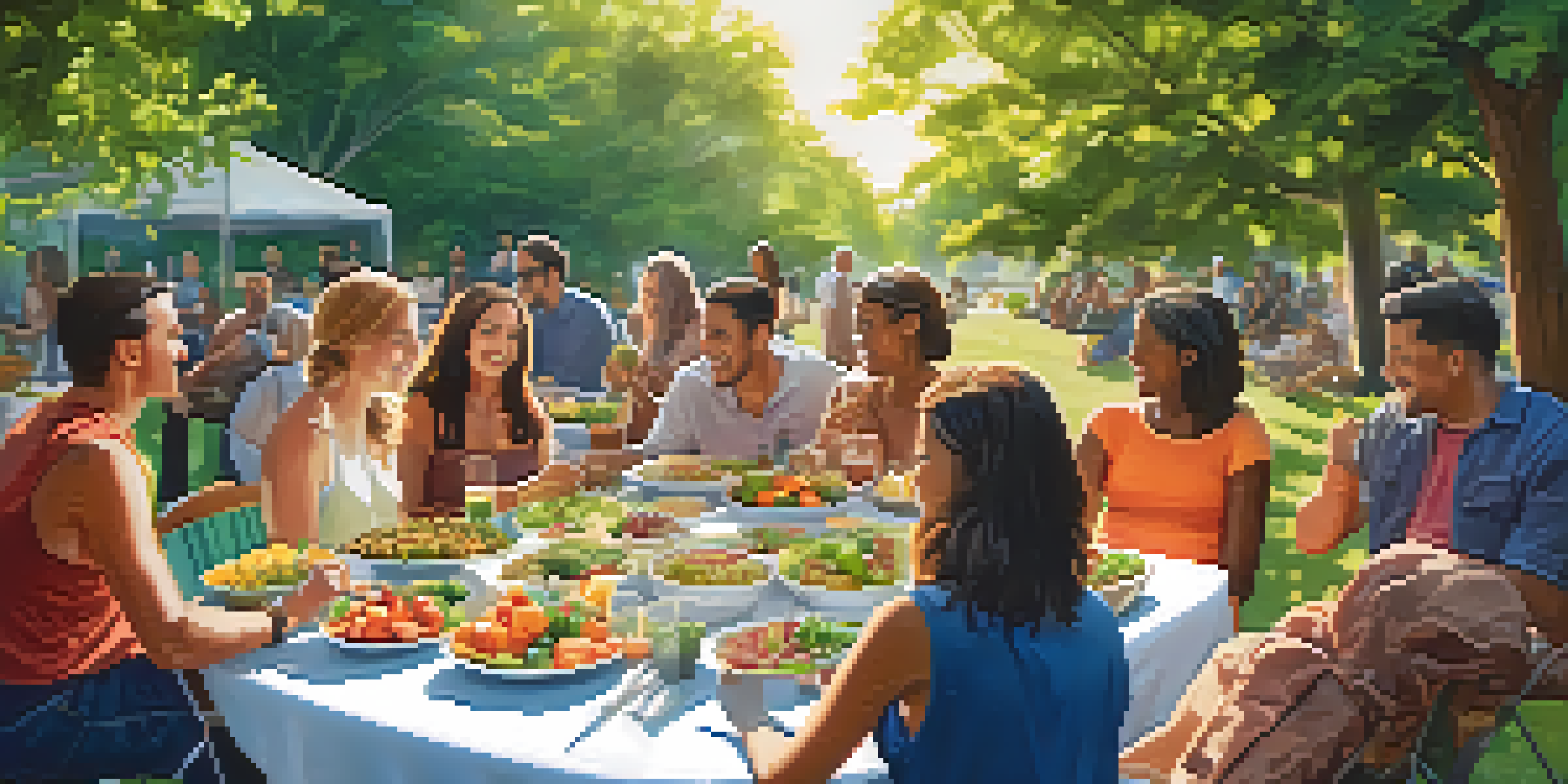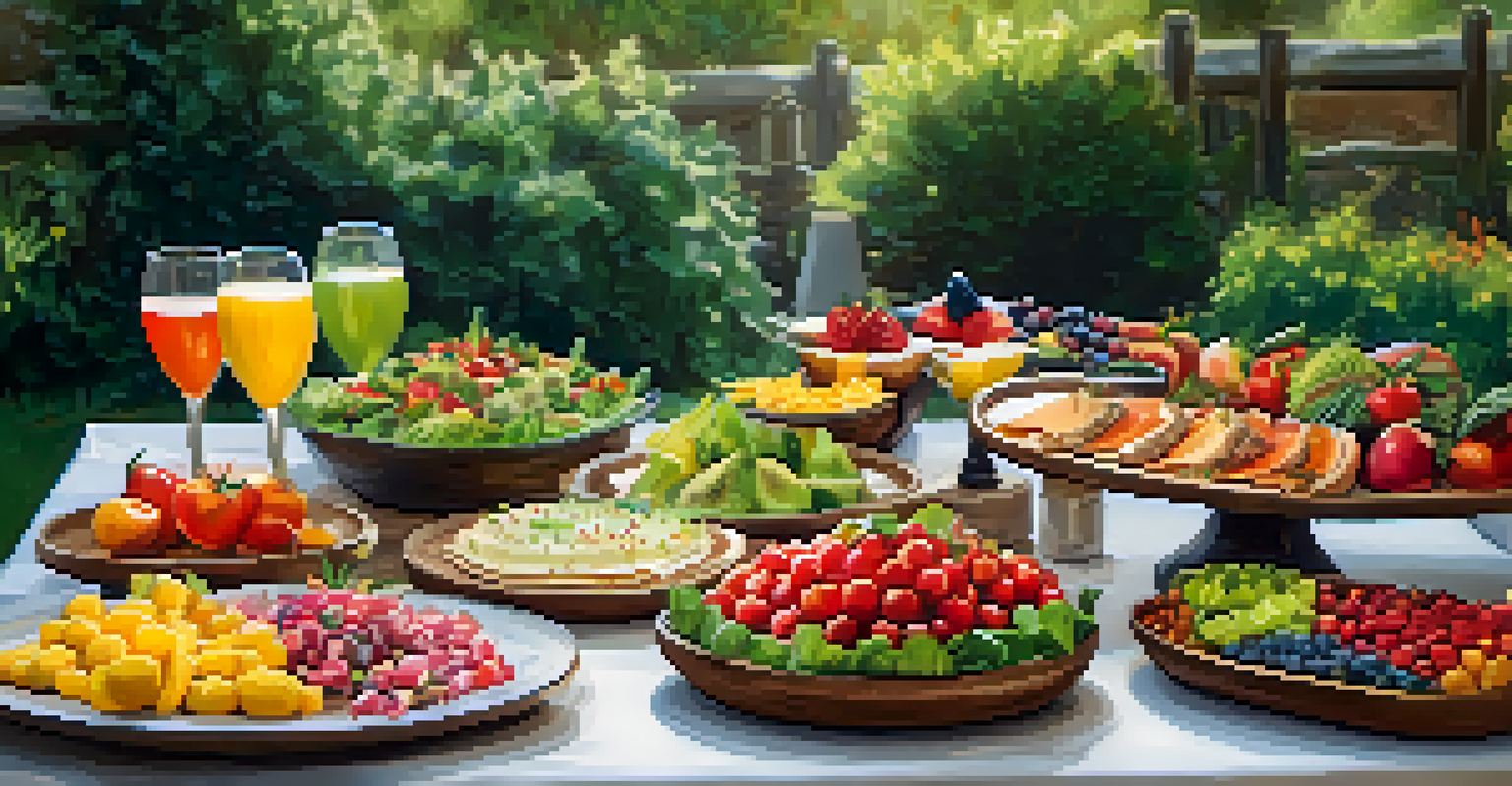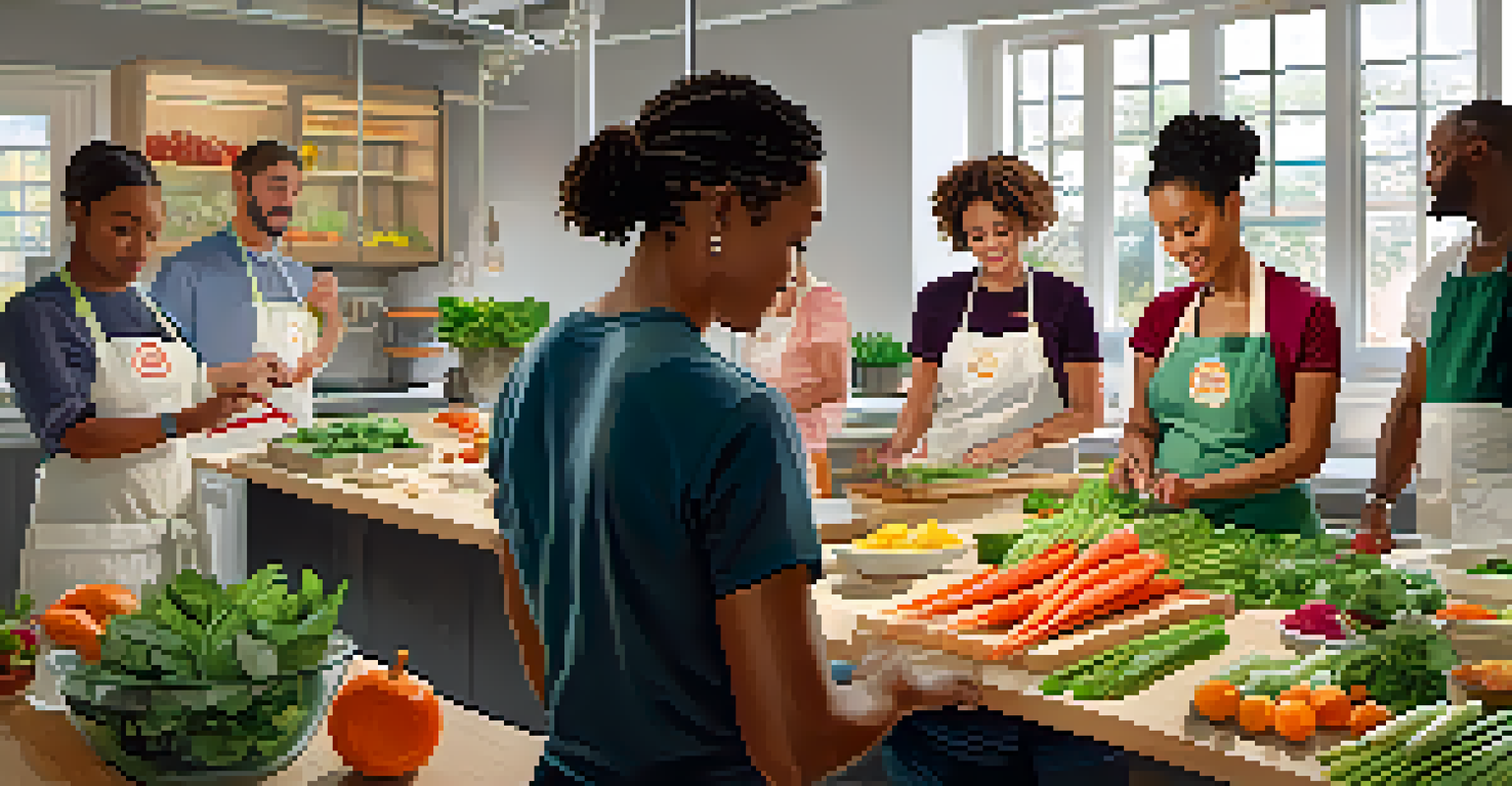The Role of Community in Raw Food Lifestyle Acceptance

Understanding the Raw Food Lifestyle
The raw food lifestyle emphasizes consuming unprocessed, uncooked foods, often focusing on fruits, vegetables, nuts, and seeds. This approach to eating is rooted in the belief that cooking diminishes nutrients and natural enzymes beneficial for health. For many, it's not just about diet but a holistic way of living that promotes well-being and sustainability. Understanding this lifestyle is the first step toward acceptance, paving the way for individuals to explore its benefits within a community.
Eating raw food is not just a diet; it’s a lifestyle that promotes health, vitality, and connection with nature.
People often find themselves drawn to the raw food lifestyle for various reasons, including health issues, ethical concerns, or environmental awareness. By connecting with others who share similar motivations, individuals can reinforce their commitment to this way of eating. This shared understanding fosters a sense of belonging, which can be crucial when making significant lifestyle changes. As newcomers navigate their journey, community support can provide encouragement and guidance during challenging times.
Additionally, the raw food movement has gained traction through social media and online forums, where individuals share their experiences and recipes. These platforms allow for the exchange of ideas and success stories, helping to demystify the lifestyle. When individuals see others thriving on raw foods, it inspires them to try it themselves, creating a ripple effect of acceptance and exploration.
The Power of Community Support
Community support plays a pivotal role in the acceptance of a raw food lifestyle. When individuals join groups—whether in person or online—they find encouragement and accountability. This sense of community can help reduce feelings of isolation, especially when faced with skepticism from non-raw eaters. Being surrounded by like-minded individuals provides a safe space to explore new ideas and share challenges.

Moreover, community members often organize events, workshops, and potlucks that allow participants to experience raw foods in a friendly environment. These gatherings not only promote learning but also foster relationships among individuals who share a common goal. Food is a universal language, and sharing meals can bridge gaps, making the transition smoother and more enjoyable.
Community Enhances Raw Food Journey
Supportive communities provide encouragement and accountability, making it easier for individuals to embrace the raw food lifestyle.
When individuals feel supported by their community, they are more likely to stick with their raw food journey. This support system can help them overcome obstacles—be it cravings for cooked foods or social situations that challenge their dietary choices. Ultimately, a strong community can make the raw food lifestyle not just a diet but a fulfilling way of life.
Sharing Knowledge and Resources
Communities focused on raw food often prioritize sharing knowledge and resources, which can significantly enhance acceptance. Experienced members typically share valuable insights about nutritional benefits, meal planning, and preparation techniques. This wealth of information can be a game-changer for those new to the lifestyle, easing the learning curve and making it accessible.
Community is not just an important thing; it is everything.
Workshops and demonstrations within these communities allow participants to learn hands-on skills, such as creating delicious raw dishes or understanding food dehydration. These experiences not only empower individuals to take charge of their nutrition but also cultivate a sense of accomplishment. When people feel equipped with knowledge, they are more likely to embrace the raw food lifestyle wholeheartedly.
Additionally, online platforms provide an abundance of resources, including recipes, meal plans, and success stories. This digital exchange can connect individuals from different backgrounds, creating a larger network of support. The sharing of knowledge and resources fosters a culture of acceptance and exploration, making it easier for newcomers to integrate into the raw food community.
Building Resilience Through Connection
The journey towards embracing a raw food lifestyle can be filled with challenges, and community plays a crucial role in building resilience. When individuals face setbacks—like cravings or social pressure—they can turn to their community for support and encouragement. This emotional backing helps them stay committed to their goals, reinforcing their identity as part of a larger movement.
Shared experiences within the community can also provide valuable lessons, turning obstacles into opportunities for growth. Members often share personal stories of struggles and triumphs, creating a collective narrative that inspires others. By learning from each other’s experiences, individuals can navigate their own challenges more effectively, fostering a sense of resilience.
Diversity Enriches Raw Food Experiences
The varied backgrounds within raw food communities foster inclusivity and broaden the understanding of raw food practices.
Ultimately, the bonds formed within a community help individuals feel less alone in their journey. This connection can motivate them to persevere through tough times and celebrate achievements together. The communal aspect of the raw food lifestyle transforms individual efforts into a collective success, making the journey more rewarding.
Celebrating Diversity in Raw Food Communities
Raw food communities are diverse, encompassing individuals from various backgrounds, cultures, and dietary preferences. This diversity enriches the community, allowing members to learn from each other’s unique approaches to raw food. Different cultural traditions can introduce new flavors and ingredients, enhancing the overall experience of embracing a raw food lifestyle.
Celebrating this diversity can also foster inclusivity, inviting more people to participate regardless of their starting point. It allows for a broader understanding of what raw food can be, moving beyond a strict set of rules to a more personalized approach. This openness encourages experimentation and adaptation, making the lifestyle more relatable to newcomers.
Moreover, having a diverse community can challenge stereotypes and misconceptions about raw food. When individuals see others who fit various profiles—age, gender, or ethnicity—engaging with raw foods, it broadens the appeal. This representation can inspire others to explore the lifestyle, knowing that it’s not limited to a specific demographic.
Networking and Collaboration Opportunities
Within raw food communities, networking and collaboration can lead to exciting opportunities for growth and learning. Members often connect with local farmers, nutritionists, and chefs, creating partnerships that enhance their understanding of raw foods. These collaborations can result in informative events, workshops, or even community gardens that promote a deeper connection to food sources.
Additionally, networking can open doors for advocacy and awareness about the benefits of raw food lifestyles. Communities can join forces to organize events that educate the public, from cooking demonstrations to health fairs. These efforts can help shift perceptions and promote a more sustainable and health-conscious way of eating.
Future Growth of Raw Food Communities
As health awareness rises, raw food communities are expected to expand, leveraging technology to connect and share resources globally.
By fostering connections, raw food communities can create a ripple effect that extends beyond their immediate circles. This collaborative spirit not only strengthens the community but also amplifies their collective voice, advocating for a lifestyle that prioritizes health and well-being.
The Future of Raw Food Communities
As awareness of health and sustainability continues to grow, the future of raw food communities looks promising. With more people seeking healthier lifestyles, these communities are likely to expand, offering increased support and resources. This growth can lead to innovative ideas and practices, making the raw food lifestyle more accessible to a broader audience.
The integration of technology, such as apps and online platforms, can further enhance community engagement. Virtual meet-ups and online cooking classes can connect individuals regardless of geographical barriers, fostering a global community. This digital shift can facilitate the sharing of knowledge and experiences on an unprecedented scale.

Ultimately, the future of raw food communities will rely on their ability to adapt and embrace change while remaining true to their core values. By fostering acceptance, diversity, and collaboration, these communities can inspire a new generation to embrace the raw food lifestyle, ensuring its relevance for years to come.